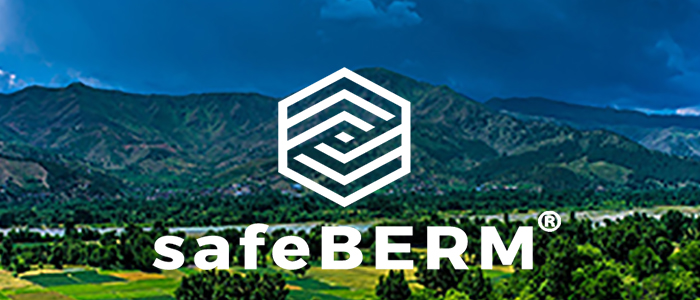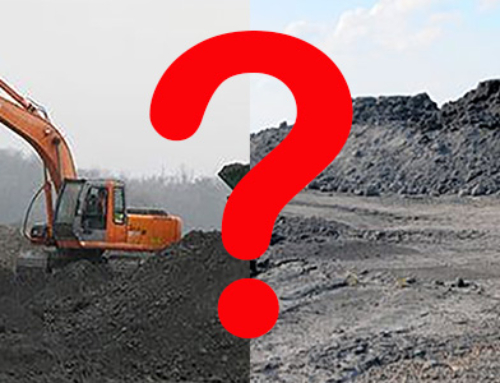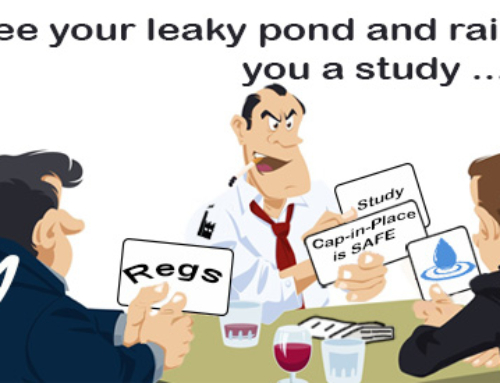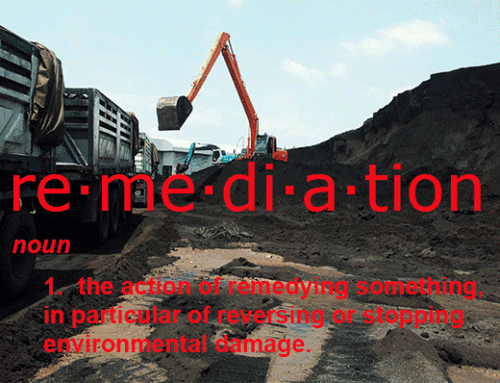Change is Coming – Solutions Must be Ready
- Earthquakes
- Floods
- Hurricanes
Our planet, especially here in the southeastern and eastern U.S., is being subjected to an onslaught of extreme weather events, such as freak earthquakes, massive floods and devastating hurricanes.
These events generate a steady flow of new concerns about the environment. Protection against rising water levels, for example, the threat flooding poses to sites that store hazardous chemicals discussed by Bacon’s Rebellion, should have environmentalists actively seeking answers.
Adding to the already long list, more questions are being raised as to the adequacy and strength of traditional safeguards to manage these threats.
Hurricane Florence in 2018 brought epic rains to North Carolina, eroding earth covering a coal ash landfill at Duke Energy’s now-inactive L.V. Sutton Power Plant near Wilmington. This landfill was constructed according to current regulations. Those traditional construction methods couldn’t contain the coal ash as water reached over the berm. This caused water-laced coal ash to flow beyond containment.
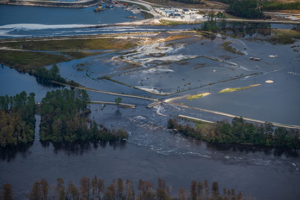
Credit: Waterkeeper Alliance Inc
At another coal ash site near the Waccamaw River in response to Florence, an inflatable dam was constructed to stop flooding from breaching the coal ash containment. But any inflatable structure can only be a temporary fix, at best.
These are just a few examples of new complications that current safeguard methodology can’t address. Innovation is needed to facilitate recovery from natural disasters, which are more frequent and catastrophic and reach farther inland as time goes on.
Innovative environmental stewardship is the answer.
Another U.S. environmental disaster 2,193 miles from the mainland is a perfect cautionary tale because it’s not a far-fetch possibility for many communities here. The territory of Puerto Rico is an island where many solid waste landfills already exceed capacity. Hurricane Maria in 2017 exposed a deadly CCR-related public health crisis that began unfolding in 2002, when AES Corporation began contaminating soil and groundwater by dumping over 2 million tons of coal ash without basic safeguards while producing only about 17% of the electrical power. The hurricane churned up the toxins, so the island now needs to find a safe CCR disposition strategy in addition to extending capacity for solid waste disposal. Macroencapsulation could solve both problems.
We must think beyond worst-case. These weather events are so severe that we’ve labeled them “thousand-year storms” on the assumption that such catastrophes typically happen only once every thousand years. But they’re becoming annual rituals in the U.S.
Much more stringent and lasting remediation is needed now by building protective structures that keep waste in and/or water out.
Macroencapsulation is an innovative solution that resolves multiple issues. For example, with long-term CCR disposition, instead of going low – such as digging ditches around coal ash ponds that are susceptible to overflowing, either by coal ash seeping out or encroaching waters seeping in – we need to go high.
We have plenty of CCR just lying around; it can be used as fill in fully lined macroencapsulated berms, bunkers, levees or dikes constructed around coal ash ponds, waste landfills or rivers bordering chemical facilities. This fulfills the dual needs of rendering the ash inert and untouchable by the elements and reclaims the land once occupied by coal ash ponds or solid waste for new uses. In addition, it protects that reclaimed land from any nearby rivers and lakes that may flood.
Instead of grasping for creative, limited or more costly methods of storm preparation, facilities can often implement foolproof macroencapsulated solutions, protecting the land against rising waters.
Some states have started to embrace these challenges, enhancing the importance of sound environmental stewardship in their communities.
It’s a win-win strategy from every perspective .
